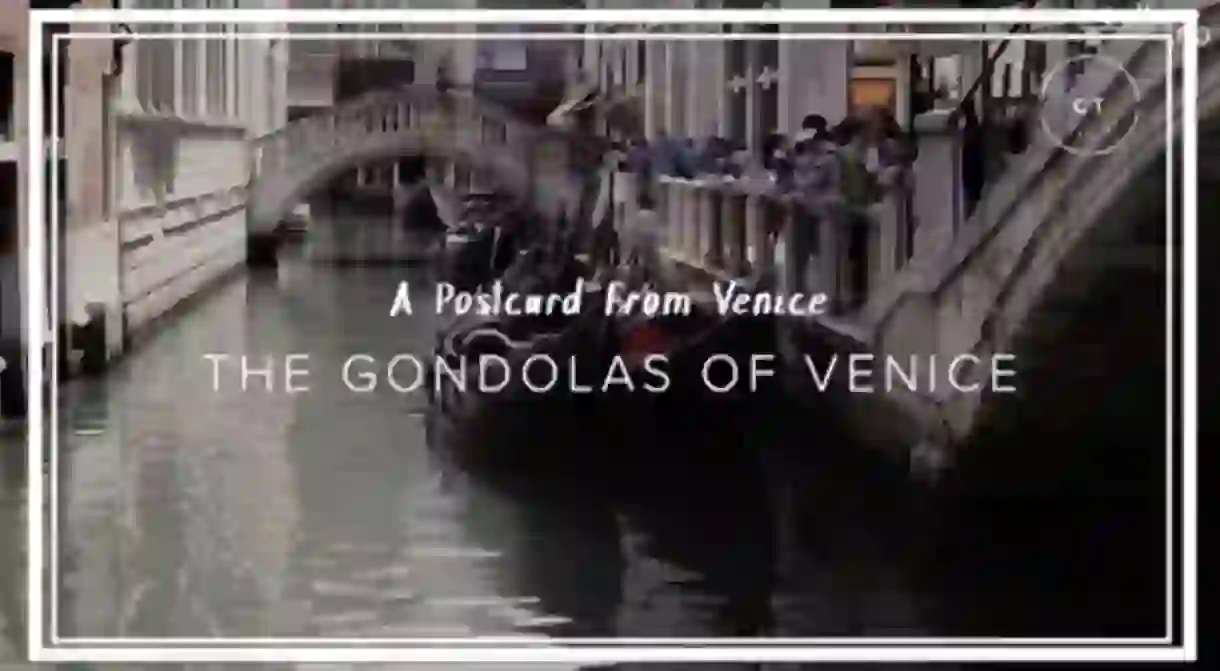History of the Gondolas of Venice in 60 Seconds

The gondola and the city of Venice are inextricably linked. The boat is shaped to fit through the city’s narrow canals and low footbridges, and the city is built to be traveled by a boat such as this. Like a canoe, it has a flat bottom, but it is narrower and longer, and rowed standing up with an oar.
It takes about two months to build a gondola, and it takes a lot of specialized knowledge to make it. The oar is held in place by an oarlock called a forcola, which is unique to this style of rowing. The iron prow at the head provides a counterbalance to the weight of the gondolier. Its curved shape represents the hat of the Doge and the six teeth underneath represent each of the six neighborhoods of the city.
Up until the early 20th century, gondolas were only owned privately. Unlike the ones you’ll see in the canals today, they were equipped with a small cabin that would provide privacy. One of the last people to use this style of boat was actually the eccentric art collector and heiress Peggy Guggenheim, who lived in Venice for the last decades of her life. Since then, they’ve been almost exclusively used by tourists, and the industry is tightly controlled by a gondoliers’ guild that allows a limited number of licenses.
The profession is historically passed between the men of the family, but recently this tradition was broken by Giorgia Boscolo, the daughter of a gondolier, who attained her license in 2010. The transgender gondolier Alex Hai also became a part of this profession after a long and protracted struggle of many years, in a fascinating story that reveals how gender and masculinity operate within this extraordinary tradition. Though almost nobody would use the gondola for transportation today, the boat and its boatsmen (and woman) are still, in many ways, at the center of a uniquely Venetian culture.













